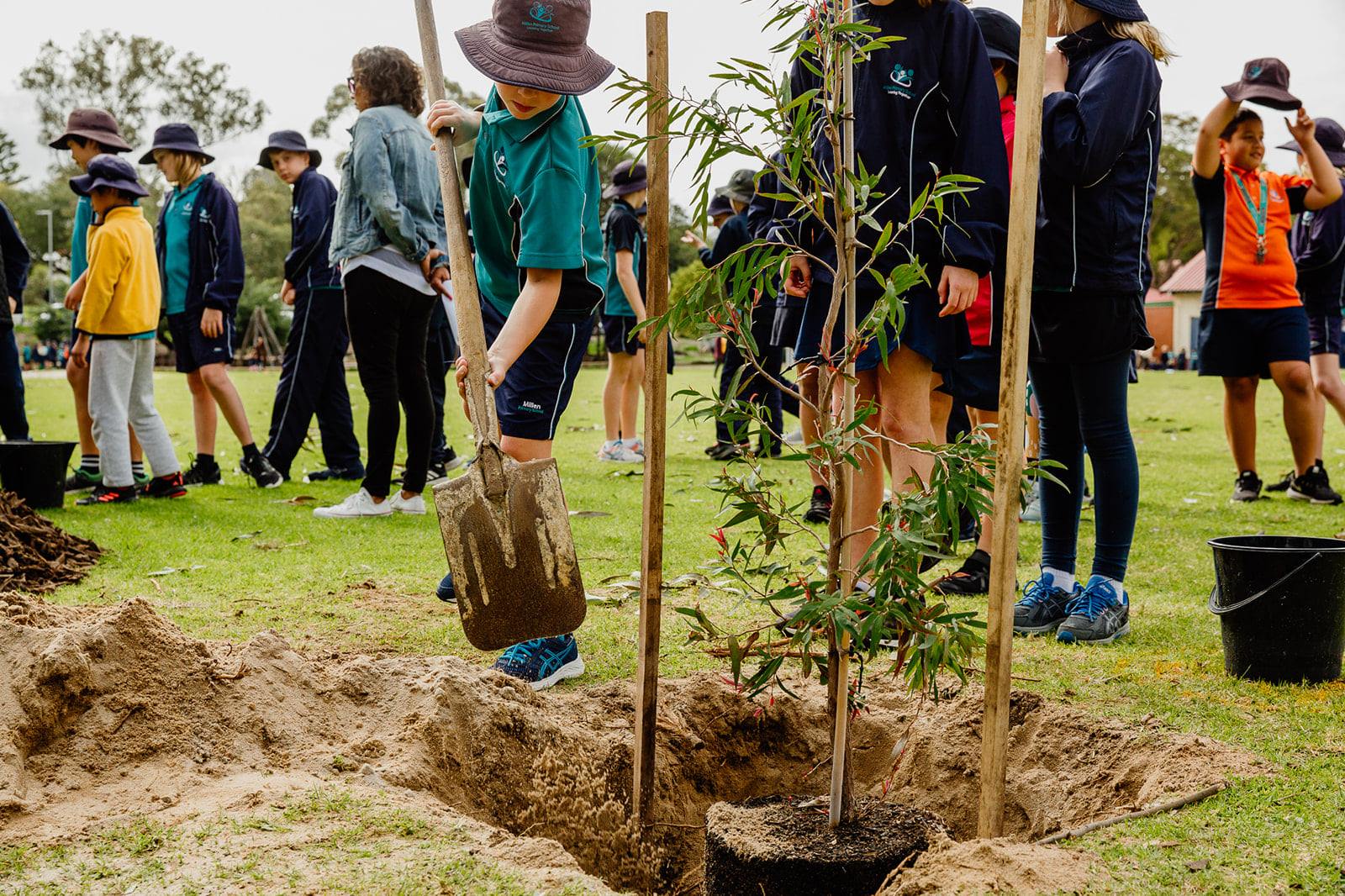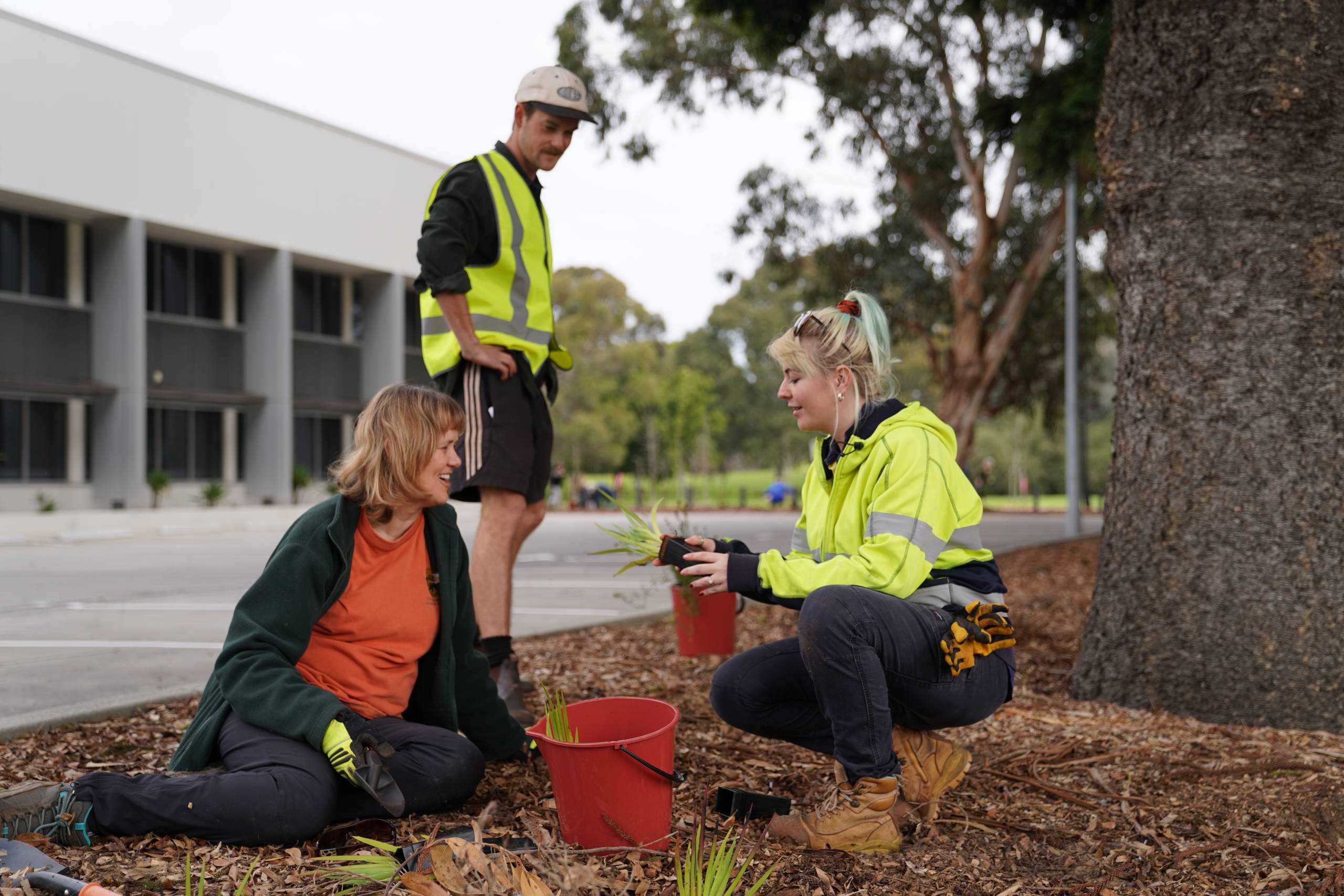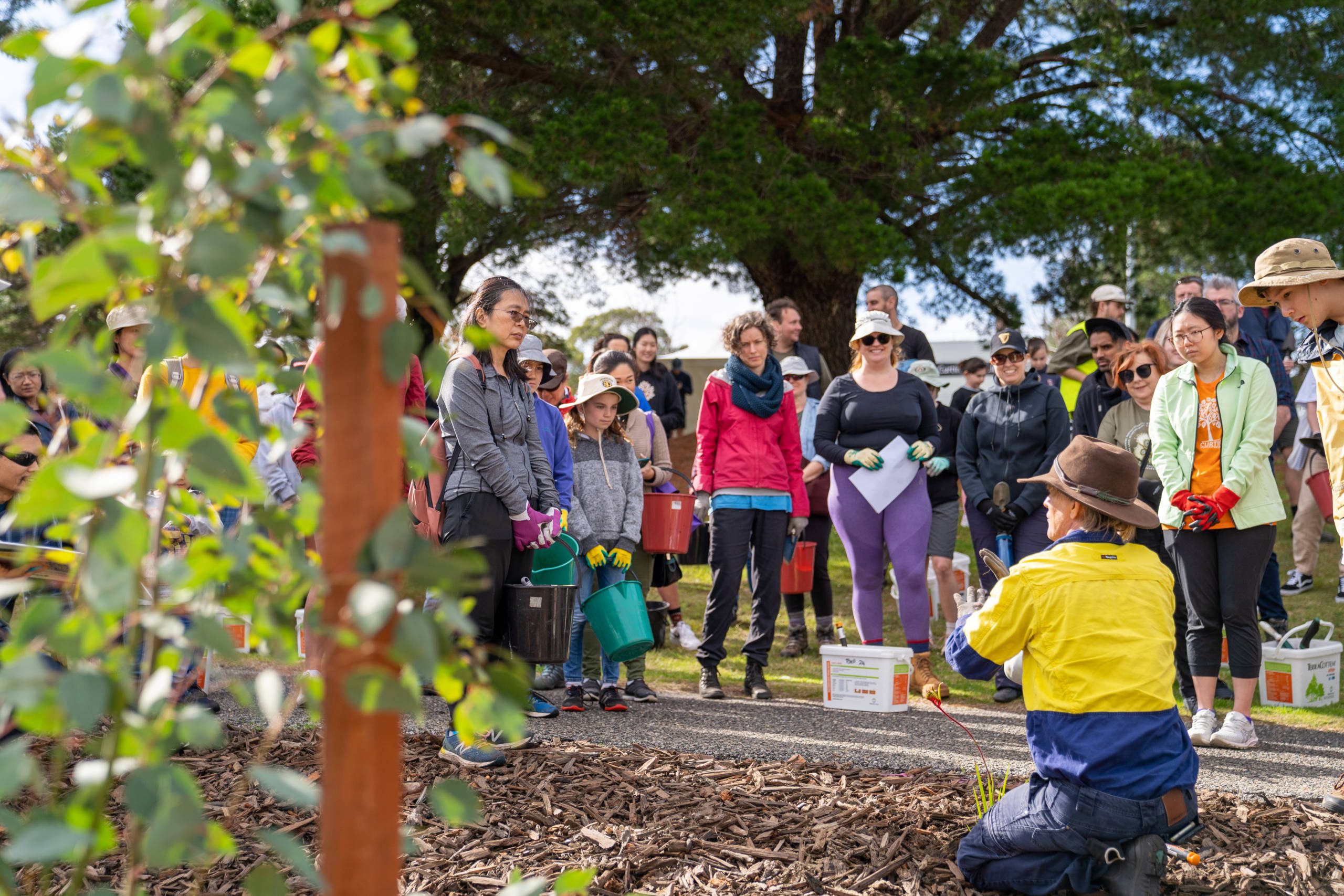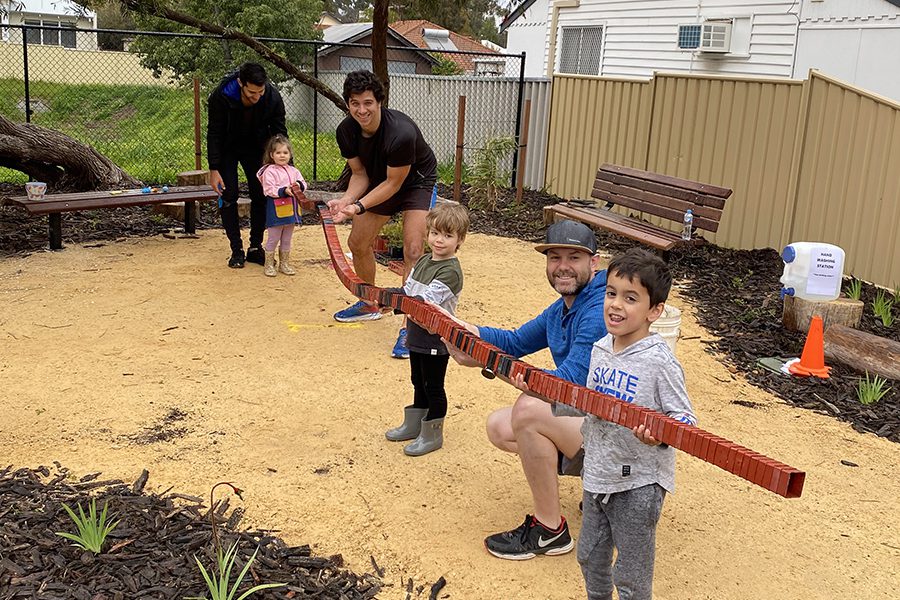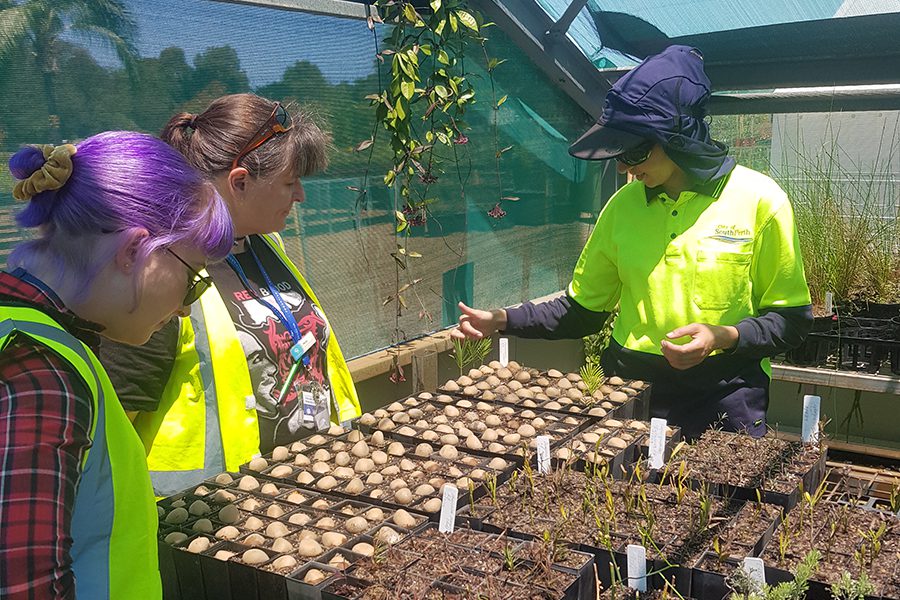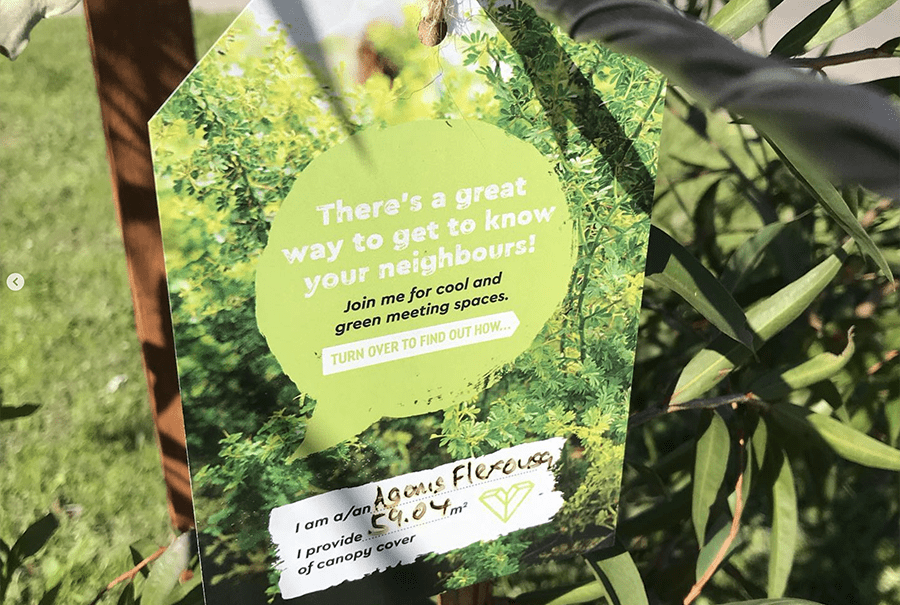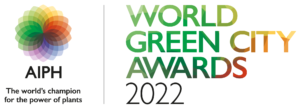Addressing the urban challenge
Breadth of the issue – How are the problem(s) that are being tackled by your initiative affecting citizens/local businesses or a significant component of the local wildlife?
Increased urban density and competition for space resolved through greening infrastructure: In the Town, increased housing density represents a significant challenge to the urban forest as trees are removed from private properties during redevelopment and densification. Our seed propagation project and its implementation to “jump the fence” into people’s private gardens, parks and public spaces, verges as part of a dedicated, annual planting program allows for endemic species and urban greening to continue throughout available, existing space around Town. This helps our local wildlife and supports increased population and enables community members to live, work and play in a healthier and greener environment.
Habitat fragmentation and loss of precious flora and fauna drives policy planning: Large-scale developments predicted to support Town’s population growth is and will continue to impact our local wildlife and the health of the environment of our community members, residents, businesses, and residents. Having an Urban Forest Implementation Action Plan that has biodiversity restoration and revegetation as one of its main outcomes has guided the revision of Local Planning Policy 39 – Tree planting and Retention, Council Policy 255 – Tree Management to ensure current and future developments prioritse green spaces and urban greening (https://www.victoriapark.wa.gov.au/Around-town/Environment/Urban-Forest-Strategy/Urban-Forest-Programs/UFS-Planning-Policy-Objectives)
Build momentum, excitement, grassroots support from community: we’re using creative, engaging methods to allow community involvement in our urban forest implementation to suit a range of volunteer commitment levels and expertise. Seed propagation activities that encourage a local act for global contribution help to gain continued support, resourcing for urban greening.
Depth of the issue – How seriously are the problems being tackled by your initiative impacting the life of the citizens/businesses/wildlife concerned?
Social cohesion: this is a key outcome of the community driven nature of the urban forest implementation. Community members working together to contribute to a greener, healthier Town of Victoria Park AND global biodiversity has been a great bonding exercise (see: https://www.linkedin.com/feed/update/urn:li:activity:6840858025163677696).
This project has also helped to establish more constructive and collaborative relationships with community groups passionate about urban forest but with differing views that were previously strained.
Combating ‘Urban Heat Island’ effect and contributing to reduced climate change: expanding our urban forest and for endemic species to jump the fence beyond just dedicated park and bush lands can play a major impact in reducing the debilitating effects of rising temperatures on the health and activity of the urban population. Our combination of small green spaces in a densely distributed network covering many streets and homes, in combination with larger green areas in parks and gardens, is probably the most effective approach to lowering UHI intensity.
Increasing local, endemic species and overall vegetation in the Town will be an important tool in the provision of ecosystem services including carbon sequestration to combat the impact of climate change for our community members, businesses and wildlife today and into tomorrow.
The power of plants and natural ecosystems to deliver benefits
How is the initiative shaped by scientific evidence of the potential for plants and natural ecosystems to deliver benefits?
It is a known fact today that endemic species are going extinct at the fastest rate since the mass extinction of the dinosaurs. The seed cultivation and dispersion project to spread endemic species of Jirdarup Bushland contributing to global biodiversity is an approach typically used in bushland restoration projects. This involves:
A. Conservation in-situ: we maintain the species in its natural environment through our annual collaboration work with the Friends of Jirdarup Bushland, providing the propagated seeds to be planted during planting season.
B. Revegetation by “jumping the fence.” – In inner city locations, we are applying the revegetation aspect of the bushland restoration techniques to vegetate areas outside of the bushland, and into people’s homes and everyday infrastructure. Propagated seeds are used at community planting days, for planting at private gardens via urban forest at home program, for eco-zoning in parks and for street and park trees throughout Town.
C. Employing other bush restoration techniques within an urban context: dry planting, large scale soil amelioration, site preparation and ongoing maintenance programs.
By encouraging the endemic species to spread beyond the bushland, we will be able to:
Create a protective barrier against attacking weeds before it reaches the bushland;
Enable mass urban greening that is sustainable and achievable without intensive use of resources;
Allow the spread of endemic, local, bushland species which require less maintenance, to dominate our urban forest.
Develop an appreciation for local species and landscapes among the community and contribute to a strong “sense of place”.
How has the city exploited the potential of plants and associated ecosystems to deliver more than one benefit?
The native seed cultivation and dispersion project supports all six strategic outcomes outlined in our Urban Forest Implementation Action Plan
(https://www.victoriapark.wa.gov.au/About-Council/Council-documents/Urban-Forest-Strategy-Implementation-Action-Plan), including increasing our canopy cover, continually working with the community, increasing tree diversity, supporting local wildlife, improving our soil and water quality, and the overall urban ecosystems.
The benefits of this project extends across environmental, social and community benefits, some of which include:
- An opportunity for the community to contribute to a “sense of place” and home at the Town – the Jirdarup Bushland’s native plants and trees have been around for thousands of years, unique only to the area. By making these species more visible throughout the Town helps to create a sense of natural identity.
- Strengthening our natural ecosystem in an urban setting – increased local flora attracts and supports local fauna and contributes to better soil nutrients, cleaner air and water supplies.
- Sustainable urban forest – this is an example of bringing in proven and long-standing bushland restoration techniques into urban areas. These techniques work with the natural soils and climate to drive improvements in the ecosystems; hence the outcomes are more sustainable to create and maintain.
- Most importantly, by being involved in this project, our residents and community members have the opportunity to act local – through many communities urban forest activities – but contribute on a global scale towards preserving one of the world’s biodiversity hotspots.
Innovative and Collaborative Solution
How does the initiative show evidence of feasibility, including on-going financial and logistical support?
A 5 year commitment: It is hard to find a single act that could have a larger positive impact on the environment than simply planting a tree. When this act is performed on a mass scale the environmental benefits are immense. This 5 year focus on the Urban Forest implementation constitutes a lasting legacy of this current Vic Park community, Elected Members and Town officers.
Dedicated Place Planning Leadership: Overall coordination of the implementation is the responsibility of the Place Leader – Urban Forest who is one of seven Place Leaders that form the Town’s Place Planning team. Place Planning is a multidisciplinary team that provides place based strategic planning for the Town. Embedding the implementation of the UFS within Place Planning has ensured green infrastructure is considered within the overall strategic planning of the Town’s urban environment and is utilised as a place enhancing device.
A part of the Town’s Strategic Community Plan and Place Plans: There is no greater indication of the Town’s wide responsibility of implementing the UFS than the inclusion of UFS objectives within the Town’s principle strategy and planning document, the Strategic Community Plan (SCP – https://www.victoriapark.wa.gov.au/About-Council/Council-documents/Integrated-planning-and-reporting-framework/Strategic-Community-Plan)
The SCP reflects the community long-term vision, values, aspirations and priorities.and includes En7 “increased vegetation and tree canopy.” This has set urban greening as a key priority of the community for the Town to deliver.
City Tree Policies: Significant policy and practice developed to support the Town’s continued focus on a healthy and thriving urban forest https://www.victoriapark.wa.gov.au/Around-town/Environment/Urban-Forest-Strategy/Urban-Forest-Programs/UFS-Planning-Policy-Objectives
In what ways is the initiative innovative?
Technique innovation
The seed collection at Jirdarup and Kensington Bushlands is an involved process, which starts with waiting for the reason to collect the seeds from the fruiting bodies, storing them in a seed bank before they are propagated (grown) in specialist nurseries. The propagation process often requires specialised facilities and techniques that often mirror the way the seeds grow naturally, for example adding smoke to imitate bushfire conditions. It takes up to eight to nine months for this process until the seeds become seedlings, ready for planting.
Delivery innovation
To support the seed dispersion of the endemic species from the busland, other typical bushland restoration techniques have also been employed within an urban context including dry planting, large scale soil amelioration, site preparation and ongoing maintenance programs. The Town has worked with The Biodiversity and Conservation Science team based at Kings Park – one of the world’s largest inner-city park – on a smoking treatment, which mimics the natural process of dormant seeds to receive specific fire cues and emerge as seedlings in a relatively resource-rich post-fire environment. Successful smoking treatment can help the successful planting of many seeds of endemic plants, shrubs and trees.
Implementation innovation
As mentioned, to help the endemic species to “jump the fence” of the Bushlands, we have developed innovative implementations involving residents, including Urban Forest at Home, Community Planting, Street Trees planting and using the propagated seeds together with other local species selection for all planting activities.
How is the initiative supported by collaborative working across disciplines and sectors?
Our Urban Forest Place Leader works hand-in-hand with the Town’s other service areas so all projects are planned and delivered as a team, with Place Leaders ensuring the Towns work is relevant and specific to the needs of each neighbourhood and its people. This has ensured the implementation of the UFS is not siloed within a single department but is within the strategic objectives of multiple service areas including, parks, environment, natural areas, engineering, community development, statutory planning, engagement, communications, and events teams.
The urban forest implementation and its focus on seed propagation is shared across all of the Town’s service areas and has successfully seen:
1. statutory planning team implementing local planning policy changes,
2. engineering proposing greening opportunities within road and footpath upgrade projects,
3. events team leading community planting days, maintenance operators proposing urban greening projects, and,
4. the natural areas team moving out of typical remnant bushland preservation into the suburbs and expanding the Town’s urban bushland,
5. community members, parents and students at schools and environmental youth organisations are helping to implement planting programs on private land and raise awareness of our urban forest, together with the Urban Forest teams. Examples include an aged care facility working with its residents, landscape architects and aborists to create a connected canopy cover garden using native species and a school where every class year adopts a local tree they plant, water and nurture with their parents, local Elders and high school buddies:
https://www.victoriapark.wa.gov.au/Around-town/Environment/Urban-Forest-Strategy/Get-involved-in-our-urban-forest-in-2022/Urban-Forest-Grants
How does the initiative demonstrate evidence of community support?
Urban Forest Grants
The Town has successfully delivered two rounds of Urban Forest Grants in 2020 and 2021. This has created deep involvement by enabling local groups and their extended community to deliver their own initiatives. Local primary schools, aged care facilities, and local planting groups have been involved to date, approximately providing 50 hours of volunteer time per grant. With 5 successful grants to date, our community has contributed 250 hours, planted planted 49 trees, 480 shrubs contributing 2661m² projected canopy.
Community planting
Since 2020, the Town has organised 4 Town wide community planting days, and 4 street focused planting events, planting a mix of local selected and endemic species. Approximately 100 community members attend for 3 hours per event. To date, contribution is 1200 hours and 7383 trees planted.
Green Basins program
Four Green Basins projects were implemented this year, with involvement from the community mainly driven by local residents who coordinate and communicate through their own local channels. We estimated 100 residents participation, contributing approximately 200 volunteer hours to the planting of drainage basins in Town.
Friends of Jirdarup Kensington Bushland Biodiversity Plantings
Annually, the Friends of Jirdarup have voluntarily worked in partnership with the Town to plant more native seedlings in Kensington Bushland. Since 2020, the Friends planted 356 tree seedlings and 2,771 shrubs to provide the Town with a projected canopy cover of 13,230 m²
Implementation, Impact and Replicability
How does the initiative demonstrate evidence of a track record of success against pursued objectives?
Our Urban Forest achievements to date:
- Plant and protect trees to achieve 20% tree canopy: In 2016, the Town had a canopy cover of 12% of land area, one of the lowest in Perth. Since our Urban Forest program began in 2017/18, we have contributed to an extra 2.1% projected canopy cover: https://www.victoriapark.wa.gov.au/Around-town/Environment/Urban-Forest-Strategy/Yearly-planting-progress/2021-Planting-Season-Report
- In the past 2 years we’ve planted 6,820 trees adding 250,000m2 of projected canopy.
- Maximise community involvement and collaboration: The overwhelming community support for our Urban Forest has prompted the Town to start ordering stock in advance of planting seasons. In 2021, we ordered 2,200 trees & 35,000 local shrubs propagated to meet the increasing demand for greening Vic Park! We’ve had to expand our seed propagation to a new nursery.
- Increase tree diversity, favouring endemic species: a tree selection guide accommodates for an open engagement and education process. In 2021, top 5 species planted were WA natives.
- High standard of vegetation health, soil, water quality: Green basin planting with propagated seeds, filters and strips nutrients and pollutants from stormwater before it enters the groundwater system, creates a unique ecosystem and habitat for local fauna while expanding the area of local flora protecting our unique and globally significant biodiversity.
- Improve urban ecosystems: 37% of the Town’s 2021 planting season projected canopy was achieved via a number of Urban Ecosystem programs. We continue to identify planting areas with propagated flora and has added approximately 20,000m2 urban ecosystem area in 2 years.
How has the initiative had a ripple effect beyond the scope of the initiative itself, thereby demonstrating a change in the city’s and/or its partners’ way of working with plants?
Changing Town’s way of working with plants:
Changing the way Partners work with plants:
- The Town’s big redevelopment projects – with developers, capital ventures and architects/urban designers – have a strong focus on maintaining green space, driven by community consultation, with Redevelopment Masterplans including dedicated urban greening projects.
- Our engineers are now working with innovations that incorporate greening infrastructure when they construct new roads. We’ve turned busy car laneways to tree filled spaces by applying techniques to convert vehicular lanes into a large tree filled public space and pedestrian thoroughfare. These engineered systems create suitable root zones so trees can reach their full size quicker (estimated 30 years growth in 10 years). They are also using permeable paving to allow rain water to infiltrate the paved areas and enter the root zone, helping planting successfully in Perth’s dominant nutrient poor, non-wetting Bassendean sands.
- We’ve researched and adopted new planting techniques with specialist amelioration of the existing natural soil, smaller tree stock size planting (25/35L) and the use of Tree Wells to improve watering regime effectiveness.
How have other cities expressed interest in the initiative, or what potential does it have to interest other cities and be customised to their own circumstances?
The current focus of the greening activities is within the boundaries of the Town of Victoria Park however through collaboration with other Local Government Authorities this could be expanded.
One particular opportunity would be the identification of ecological corridors that run across local government boundaries providing a habitat connection between various key ecological sites. The Town is currently planning an ecological corridor to connect Curtin University campus, and the Kensington bushland to the Swan River Foreshore. This will then extend along the Town’s portion of the foreshore; it could go further to include neighbouring foreshore at City of Belmont and City of South Perth, and beyond up and down the Swan River.
Additionally, through collaboration with the City of Canning this same corridor could be connected from Curtin university to the canning river and along the Canning River foreshore. This corridor approach is being delivered on a large scale in rural areas however the corridors being planned within Vic Park could be a component of a broader Perth metropolitan urban ecological corridor network.
Our Tree Cities of the World status also opened knowledge sharing sessions with other Australian cities to learn from their successes and lessons learnt (and vice versa). We were also chosen (the only Australian presentation) to share our Urban Forest community collaboration innovation to 430 global leaders at the Tree Cities of the World annual conference in 2021.
Sustainability and Resilience
What efforts have been made to reduce the carbon footprint of the initiative?
Street trees planted to our new specifications receive half the amount of water to reach establishment as those planted under previous methods. Other bushland restoration techniques have also been employed within an urban context: dry planting, large scale soil amelioration, site preparation and ongoing maintenance programs. These techniques are vital to enable mass urban greening that’s sustainable and achievable without intensive resource use.
Trees and shrubs propagated at a nursery located on the immediate boundary of the Town reduces travel time – and hence car / transport pollution – for staff and contractors picking up and planting the stock.
Trees in urban environments often don’t reach their full size & health due to the restrictive root zones they’re planted in, staying in an immature state for many years (or their whole lifetime). The Town is addressing this issue by providing adequate soil volume for urban trees to reach maturity. This is a win-win situation, providing hard paving for pedestrians above the root zone while delivering uncompacted soil for the roots to survive in.
Permeable paving allows rainwater to infiltrate the paved areas and enter the root zone. 14 x 8m2 zones are created in a high street urban area to improve tree health and speed to reach maturity as well as improve drainage and urban water outcomes.
Given the vast amounts of trees and shrubs planted yearly, the program has a net positive impact on climate change mitigation and on adaptation through cooling the urban environment.
How have the anticipated impacts of climate change been considered?
Western Australia has a long history of using exotic trees in streetscapes and urban areas. Its impact are starting to be noticed with water table reductions, increased summer heat and lower rainfall in the last few decades. Accustomed to cooler climates and higher rainfall, some exotic species are in poor health due to their lack of climate suitability.
Our Urban Forest Program has focused on a shift in tree planting species towards climate suitable exotics and local tree species. In a sign of great change, the 5 most planted species in the 2021 street tree planting program were native species. This move towards native trees increases the ecological services provided by the tree plantings, fostering the ancient relationships between local flora and fauna.
Included in our aerial mapping analysis is highly detailed thermal mapping of the Town. This data is used to determine “hot spots” in Town – areas of higher risk of heat wave related deaths now and in the future. These areas are compared with vulnerability demographic data to determine areas of focus for tree planting. A Number of High Urban Heat and High Vulnerability have been recognised near aged care housing providers and in low socio-economic areas with tree planting targeting these areas. It was also determined that overall Carlisle and Lathlain were the two overall highest temperature suburbs within the Town. Tree planting has targeted these suburbs. This data based targeted approach will assist in climate change adaptation for the Town, now and into the future.
What processes does the initiative include for it to be considerate in its use of soils and other natural resources?
The Urban Forest program implementation has included the reduction in irrigated turf around the Town and replacement with Urban Ecosystem areas that are unirrigated. This has led to a reduction of Town water use in Parks and high-profile verge spaces. This active process of turning non active turf spaces into urban ecosystem sites increases fauna habitat, protects biodiversity, reduces fertiliser usage and reduces irrigation to protect potable water sources.
In addition these urban ecosystem areas have developed working on using the natural soil existing on site rather than imported soils. Compost is used during planting to improve soil quality and organic mulch from certified sustainable and pathogen free sources is used in great abundance. This specialist timber industry by product mulch retains soil moisture and slowly breaks down releasing organic material into the local soils. This moisture retention and organic material helps bring the soils to life building an ecosystem in the soils of beneficial microbes.
Street tree planting has researched and adopted new specifications that have led to a halving of the amount of water used to bring a tree to establishment. These techniques include, smaller stock sizing (25/35L), existing soil amelioration with Terracottem products and use of large tree wells.
Monitoring, Maintenance, and Management
How has the initiative been designed and implemented so that long-term needs for management and maintenance are reduced and can be met?
Incremental, program based approach: It was recognised that the 41 actions in our guiding Urban Forest Strategy were not directly implementable and to “hit the ground” running, it would require an additional project layer of defined projects to incrementally achieve each action. This process has shifted the implementation of our Urban Forest from a single project into a programme comprising a multitude of diverse projects delivered in a variety of methods. This allows for clear, measurable outcomes so that in the long term all management and maintenance decisions are based on the outcomes.
Our model for an open, participatory, incremental approach to strategy implementation that focuses on measurable, benefit linked, outcomes makes it easier to increase the 5 year implementation timeframes. This timeframe could be increased while the approach is maintained to represent a long term approach to strategy implementation. This could allow greater spread of resourcing, particularly budgets, to ease resource requirements. Following the success of this program, a program based Implementation approach has been adopted by other Town strategies including the Economic Development Strategy, Transport Strategy, Public Open Space Strategy and the planning reform program.
Cross agency collaboration: The current focus of the greening activities is within the boundaries of the Town of Victoria Park however through continued collaboration with other Local Government Authorities this could be expanded. We are working with identified agencies to identify ecological corridors that run across local government boundaries providing a habitat connection between various key ecological sites.
What protocols are in place to facilitate monitoring of results?
As this is the Town’s first ever Urban Forest program, these qualitative and quantitative measurements of the project’s implementation had to be innovatively developed:
Canopy Focused Targets: The sees canopy coverage as a major benefit of trees in the inner urban environment. Hence we focus measurement on canopy coverage instead of tree numbers as a clear measure to track the progress we’re making toward the UFS outcomes.
Projected Canopy Cover: A methodology to measure our output and gauge efforts in achieving an eventual canopy coverage of 20% across public and private land. We use our own tree audit data to determine the average canopy size at maturity of each species. This data accounts for the size each species reach at maturity in local conditions and the urban context in which we plant them. We then tally the amount of each species planted yearly to determine the overall projected canopy figure for each project and planting season.
Canopy return on investment: Each tree species is designated a Canopy Return on Investment value, used in reviewing project efficiency. It is determined by comparing the Projected Canopy of a species and to the average canopy size of all mature trees audited. Canopy Return on Investment is a critical determining factor in species selection.
Canopy, Thermal and Vegetation Condition Mapping: The Town engages specialists to acquire and process remotely sensed data collected aerially and analysed every two years to track progress towards the Town’s aim of a total 20% Canopy coverage.
How has the initiative been enhanced in response to monitoring of results?
From the onset, it was recognised that the implementation of the Town’s Urban Forest programs needed to be a process that:
- allowed contrasting perceptions to be understood and respected; and
- focussed on building momentum and excitement among the members and community.
This focus has allowed the Town and the Urban Forest Implementation Working Group to review its programs and achieve extraordinary progress toward delivering the strategic outcomes of the Town’s Urban Forest initiative.
Seven principles of operating our initiatives help to create common ground between differing perceptions between our community, Council and other stakeholders to enhance our implementation to date:
- A place based approach;
- Foster community involvement approach where everyone can get involved with different levels of commitment to suit;
- No master planning. Instead use a tree selection guide to accommodate for an open process with community opportunities;
- Developing a canopy based target that shifts focus away from numbers of trees to impact on health, environment, community, economy and climate;
- The use of storytelling to engage the hearts and minds of the community and residents;
- Open ideas for tree planting projects – inviting all stakeholders – internal and external – to propose projects;
- Create an appreciation for trees by presenting personal, cultural, historical stories of trees.



















